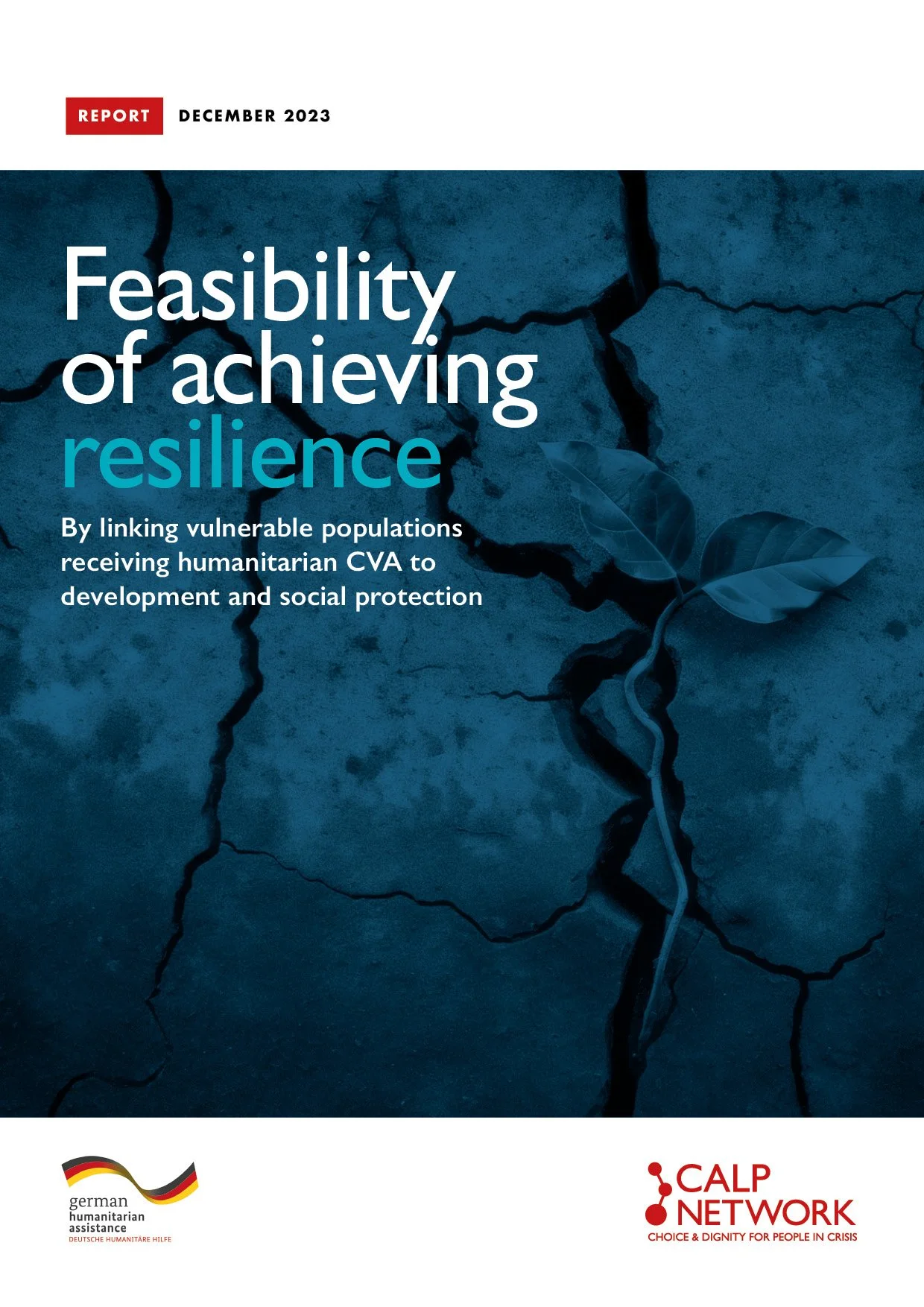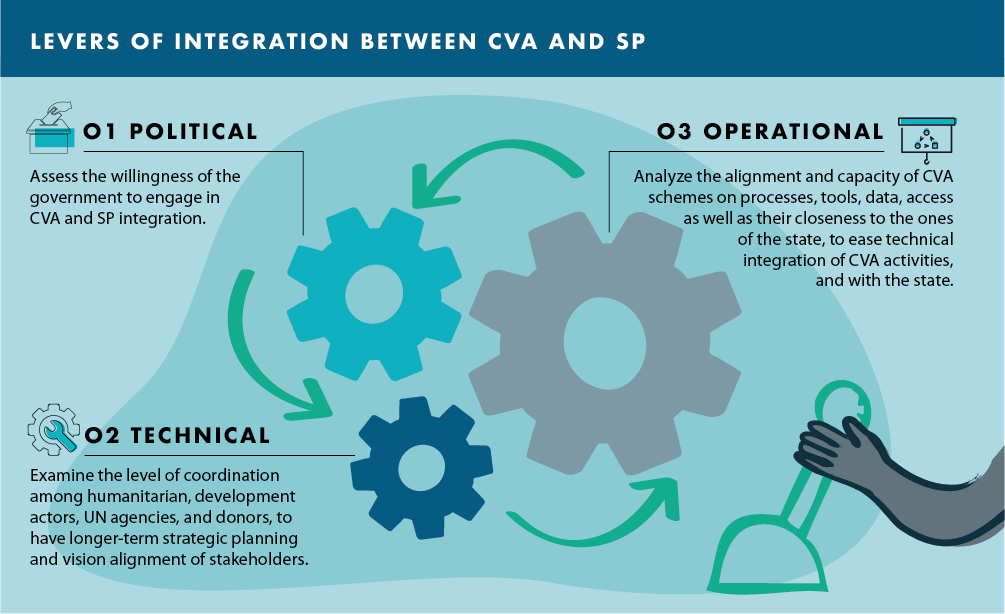Feasibility Of Achieving Resilience
Developed By:
Beyond Group
In Partnership With:
CALP Network
The German Federal Foreign Office (GFFO)
2023
Feasibility of achieving resilience
By linking vulnerable populations receiving humanitarian CVA to development and social protection
The Middle East and North Africa (MENA) region faces multiple crises, including armed conflicts, economic instability, and public service breakdowns. These crises have resulted in around 70 million people, including 27 million children, in need of humanitarian aid, 1 with countries like Syria, Yemen, Iraq, Libya, occupied Palestinian Territories (oPT), Lebanon and Türkiye being particularly affected.
There is a pressing need to invest in connecting humanitarian cash and voucher assistance (CVA) with social protection (SP) programmes. CVA in the humanitarian aid sector has experienced growth in tandem with the escalating population demands. This underscores the imperative to establish connections with enduring, sustainable, and integrated strategies that prioritize investment in national capacities.
Following an inception phase and discussion with the MENA Community of Practice (CoP) on linking humanitarian CVA with SP on relevance of countries in the region, this report focuses on Iraq, Libya and Yemen. These countries were selected based on a set of factors, including the humanitarian and political context, operational factors and the state of cooperation and linkages between stakeholders in these countries. A thorough research phase, including primary and secondary data collection, led to the development of key findings and practitioner takeaways aiming to achieve an enhanced integration of humanitarian CVA and state-led social protection. The infographic below is the framework adopted for analyzing and assessing the feasibility of linking and/or harmonizing CVA with SP in these selected countries.


